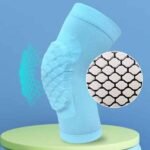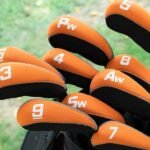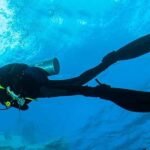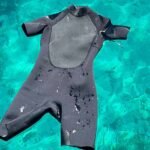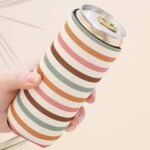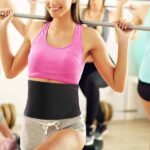Neoprene has revolutionized industries from fashion to marine, offering unmatched flexibility, durability, and insulation. But who’s really behind this versatile material? Imagine your next product line—wetsuits, laptop sleeves, or promotional koozies—all crafted to perfection. Understanding the major players and how they achieve such consistency can transform your sourcing strategy.
The largest neoprene-producing countries are China, Japan, and South Korea, which together supply over 80% of global output. Leading manufacturers employ advanced polymerization, precise vulcanization, and rigorous QC to ensure consistent density, elasticity, and chemical resistance. This expertise enables customization—from thickness and color to private-label branding—meeting diverse market needs for bags, covers, and industrial components.
By the end of this guide, you’ll grasp the global landscape of neoprene production, learn to evaluate suppliers critically, and discover negotiation tactics to secure the best MOQs, pricing, and lead times. Stick around—let’s dive deep into the story of neoprene, from raw chloroprene to your custom-designed product, and why Szoneier stands ready to partner with you every step of the way.
Which Countries Are the Largest Neoprene Producers?

China leads neoprene production with roughly 55% of global capacity, followed by Japan (15%) and South Korea (12%). The USA, Germany, and Taiwan fill niche markets with specialized grades. These regions combine raw-material access, advanced polymer technology, and economies of scale to dominate supply.
China’s dominance stems from its abundant chloroprene monomer (CR) plants and vertically integrated chemical parks. Major hubs like Ningbo and Tianjin house both CR polymerization units and foam-finishing lines. According to industry estimates, China produced 300,000 metric tonnes of neoprene in 2023, over half of global output.¹ Taiwan’s Formosa Plastics and Japan’s Denka maintain leading positions in specialty grades—high-stretch for wetsuits or flame-retardant for automotive applications.
| Country | Estimated 2023 Output (mt) | Global Share |
|---|---|---|
| China | 300,000 | 55% |
| Japan | 80,000 | 15% |
| South Korea | 65,000 | 12% |
| USA | 30,000 | 5% |
| Germany | 25,000 | 4% |
| Taiwan | 20,000 | 4% |
| Others | 30,000 | 8% |
¹Data aggregated from industry reports and trade statistics.
However, raw volume tells only part of the story. Japan and South Korea excel in specialty neoprene—grades optimized for UV resistance, high tensile strength, or eco-friendly formulations. Their R&D investments yield materials that command premium pricing, while Chinese mills leverage cost efficiency for commodity grades.
From a buyer’s perspective, blending these sources can optimize cost and performance. For example, an outdoor gear brand might source standard thickness from China for bulk orders and supplement with Japanese high-stretch foam for flagship lines. This hybrid approach balances budget targets with flagship product differentiation.
Yet, the concentration of production in East Asia exposes supply chains to geopolitical and logistical risks. Trade tensions or port disruptions can ripple through inventories. Increasingly, buyers explore regional backups—such as specialty US or European mills—to mitigate single-source dependency. While per-unit costs rise, the security of supply and shorter lead times often justify the premium, especially for urgent or high-value orders.
Finally, recent trends suggest emerging players in India and Southeast Asia are scaling up polymerization facilities. Though current volumes remain modest, these regions promise lower labor costs and growing local demand. Monitoring their progress can reveal new opportunities for cost-competitive sourcing.
How Do Leading Manufacturers Produce High-Quality Neoprene?
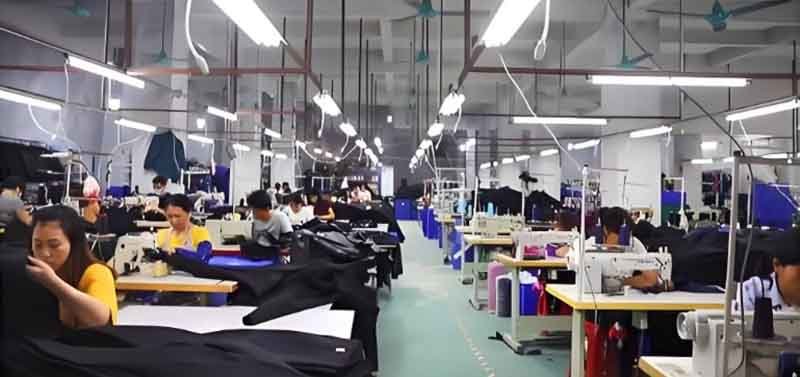
Top producers polymerize chloroprene into CR latex, then vulcanize and foam it under controlled heat and pressure. Strict mixing ratios, advanced continuous mixers, and real-time density monitoring ensure uniform cell structure, elasticity, and chemical resistance across batches.
The journey from chloroprene monomer to finished neoprene involves multiple critical steps:
- Emulsion Polymerization: Chloroprene monomers are emulsified in water with surfactants and free-radical initiators. Continuous stirred-tank reactors yield consistent CR latex. Precision control of temperature (5–15 °C) and agitation rates prevents runaway reactions or variance in molecular weight distribution.
- Coagulation and Washing: The latex is coagulated—often using calcium chloride—and washed to remove residual surfactants and unreacted monomers. Purity at this stage influences final foam color, odor, and shelf stability.
- Mastication and Compounding: The rubber crumb is mixed with fillers (e.g., carbon black or silica), plasticizers, antioxidants (e.g., TMQ), and vulcanizing agents (sulfur or peroxides). Advanced mills employ continuous blending lines with real-time torque and viscosity feedback to adjust ingredient feeds dynamically.
- Vulcanization & Foaming: The compounded sheet undergoes heat and press cycles in a hot-plate or continuous vulcanization oven. Controlled temperature profiles (typically 160–180 °C) generate uniform cell nucleation and expansion, targeting densities from 0.35 to 0.55 g/cm³. Density control is crucial: it dictates foam resilience, compression set, and thermal insulation.
- Finishing and Quality Control: Post-cure washing, calendaring, and skiving prepare the sheet for lamination or die-cutting. Inline thickness gauges and durometer testers verify tolerances (±0.1 mm thickness; Shore A hardness ±2). Chemical resistance tests—immersion in oils, acids, or seawater simulants—assess degradation rates under accelerated aging protocols.
Leading manufacturers integrate Industry 4.0 technologies—IoT sensors, machine-learning algorithms, and digital twins—to predict maintenance needs, optimize yield, and flag batch anomalies before they reach final inspection. For instance, a Taiwanese mill reported a 12% reduction in scrap by applying predictive analytics to vulcanization temperature profiles.
Yet, challenges persist. Balancing eco-friendliness with performance drives R&D into bio-based plasticizers and non-chlorinated neoprene. While Denka and Chevron Phillips have launched limited “green neoprene” lines, widespread adoption remains constrained by higher costs and incremental performance compromises. B2B buyers must weigh sustainability premiums against end-use requirements—some marine or medical applications mandate stricter environmental credentials, justifying the investment.
Moreover, batch-to-batch consistency remains a differentiator. Smaller mills may struggle to maintain tight hardness tolerances or cell uniformity, leading to fit issues in precision-cut goods. Vetting supplier QC data and conducting trial runs with third-party labs can uncover hidden variabilities before scale-up production runs.
Which Companies Dominate the Neoprene Supply Market?
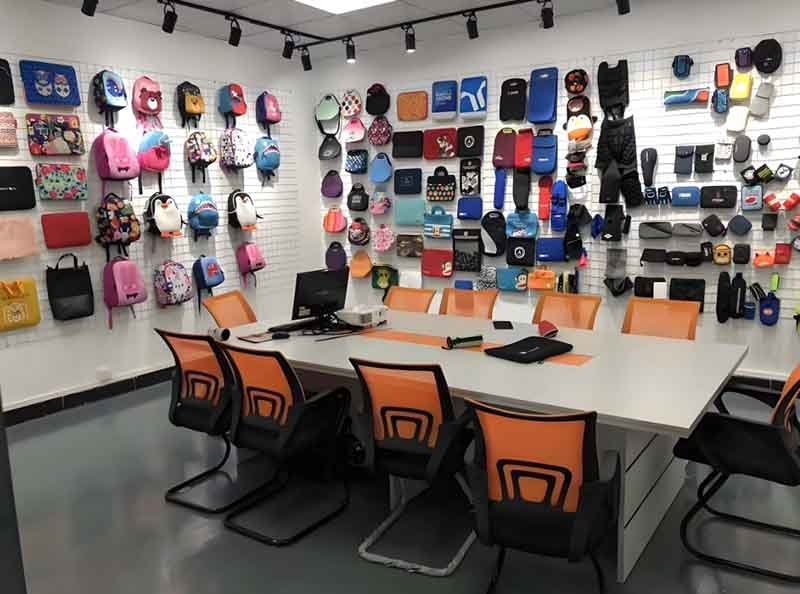
Major neoprene suppliers include Denka (Japan), Formosa Plastics (Taiwan), DuPont™ (USA), and several Chinese players like Ningbo Shenmao and Dongyue. These companies combine large-scale capacity, global sales networks, and R&D prowess to serve diverse industries.
The top tier of the neoprene supply market features:
- Denka Co., Ltd. (Japan): Known for CR-grade “Denka Neoprene,” with strengths in specialty foams for automotive seals and sportswear.
- Formosa Plastics Group (Taiwan): Supplies both raw sheets and laminated composites, excelling in medium-density grades for industrial gasketing.
- DuPont™ Chloroprene (USA): With legacy brands like Neoprene™ rubber, DuPont leads in medical-grade and flame-retardant foams.
- Ningbo Shenmao (China): Emerging as a high-volume supplier with aggressive pricing, focusing on standard commercial neoprene.
- Dongyue Group (China): Balances volume with specialty grades, investing in “green neoprene” technologies.
- Asahi Kasei (Japan): Offers engineered neoprene blends for precision applications in electronics and aerospace.
These companies maintain global distribution via direct offices, authorized distributors, and technical service centers. For buyers, this means easier access to technical datasheets, rapid sample dispatch, and localized technical support.
However, dominance does not guarantee the best fit for every project. Smaller, regional mills may offer:
- Faster turnarounds on low-MOQ custom runs.
- Flexible compound formulations for niche applications (e.g., FDA-compliant food-contact neoprene).
- Direct owner engagement for R&D partnerships.
When evaluating suppliers, consider not only name recognition but also:
- Technical Service: Do they provide onsite trials or send technicians to your factory for lamination or bonding setup?
- Sample Policies: Are free samples packaged and delivered in a timeframe that matches your development cycles?
- Global vs. Local Support: Will you need cross-border logistics, or can a regional partner reduce lead times and shipping costs?
- Financial Stability: Large corporations may weather raw-material price swings better, passing savings to clients.
Table: Supplier Comparison
| Supplier | Origin | Specialty Grades | Min. Order Qty | Global Offices | Sustainability Initiatives |
|---|---|---|---|---|---|
| Denka | Japan | High-stretch, Auto | 1 ton | 20+ | Bio-based plasticizers pilot |
| Formosa Plastics | Taiwan | Gaskets, Laminates | 500 kg | 15 | Recycling scrap into asphalt |
| DuPont™ | USA | Medical, Flame-retard | 2 tons | 30 | Renewable feedstock research |
| Ningbo Shenmao | China | Commodity sheets | 200 kg | 5 | Waste heat recovery projects |
| Dongyue Group | China | Eco-neoprene blends | 1 ton | 10 | Chloroprene closed-loop system |
| Asahi Kasei | Japan | Electronics, Aerospace | 1 ton | 8 | Energy-efficient polymerization |
While top suppliers offer stability and innovation, niche players can outpace them in responsiveness and tailored solutions. For instance, a European outdoor brand turned to a Czech mill for a limited-edition neon-colored neoprene sleeve—impossible from large suppliers due to MOQ constraints.
How Can You Evaluate a Neoprene Manufacturer’s Capabilities?
Assess a manufacturer by inspecting production lines, QC reports, sample consistency, technical certifications (ISO 9001, ISO 14001), and R&D depth. On-site audits, third-party lab tests, and references from existing clients reveal true capabilities beyond marketing claims.
Selecting the right partner demands a systematic evaluation:
- Factory Audit and Facility Tour:
- Polymerization Units: Ensure fresh CR latex reactors, not repurposed older vessels.
- Mixing Lines: Look for computer-controlled mixers with ingredient feeders logged digitally.
- Vulcanization Ovens: Verify temperature uniformity maps—hot spots cause density variances.
- Post-Processing: Check for inline thickness gauges and automated defect detection cameras.
- Quality Management System (QMS):
- Certifications: ISO 9001 confirms process controls; ISO 14001 signals environmental management.
- Traceability: Can each batch be traced to raw-material lot numbers, ingredient certificates, and QC logs?
- Complaint Handling: Review their process for addressing nonconformities—response times, corrective actions, and continuous improvement.
- Technical Capabilities and R&D:
- Testing Lab: Does the supplier have an on-site lab equipped with density ovens, compression-set stands, and chemical immersion tanks?
- Custom Formulation: Request evidence of past custom compounds—case studies or third-party validations.
- Product Development Support: Do they assign a dedicated engineer for prototyping, material selection, and regulatory compliance?
- Sample Performance and Consistency:
- First Article Inspection (FAI): Obtain detailed FAI reports with dimensional, hardness, and tensile test data.
- Batch Comparison: Order small runs from three different batches to compare color, hardness, and density consistency.
- Third-Party Testing: For critical applications (e.g., medical or marine), send samples to independent labs for accelerated aging and chemical compatibility tests.
- Logistics and Supply Chain Resilience:
- Raw-Material Suppliers: Are they dependent on a single chloroprene source, or do they maintain multiple feedstocks?
- Inventory Management: Do they offer buffer stock for key grades, ensuring you can ramp up orders quickly?
- Lead Time Transparency: Get clear, data-backed lead-time averages—order-to-ship history over the past year.
- Customer References and Market Reputation:
- Case Studies: Look for clients in similar industries—wetsuit brands, electronics OEMs, or automotive sealers.
- Longevity: Suppliers older than 10 years often have well-established processes.
- Financial Health: Public companies or well-backed private firms pose less risk of sudden shutdowns.
By combining facility audits, data-driven sample testing, and reference checks, you’ll distinguish genuine experts from mere marketers. Remember, a glossy brochure cannot substitute for hard data on density tolerances, batch variance, and matured corrective-action systems.
What Customization and Private Label Services Are Available?
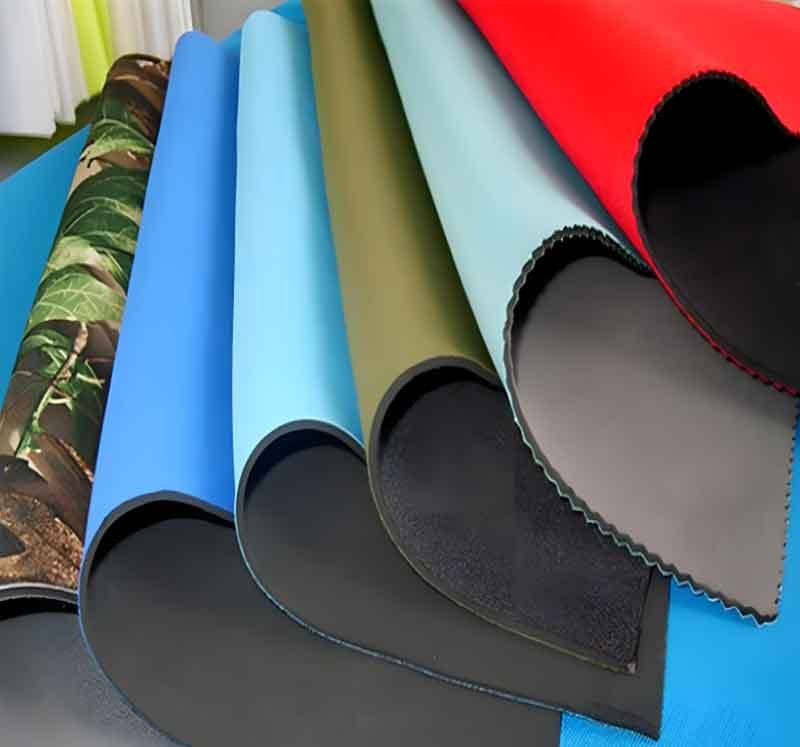
Most neoprene mills offer OEM/ODM services: custom thickness, color matching (Pantone compliance), printed or laminated finishes, private-label packaging, and product assembly. Szoneier specializes in low-MOQ runs (from 100 pieces), free design mockups, and rapid sampling within 5 days.
Customization is the cornerstone of differentiation. Leading neoprene suppliers provide:
- Thickness and Density Variation:
- Standard Range: 1–10 mm thickness; densities 0.35–0.55 g/cm³.
- Custom Grades: Ultra-light (0.25 g/cm³ for buoyancy aids) or heavyweight (0.65 g/cm³ for industrial gasketing).
- Color and Surface Finishes:
- Pantone Color Matching: Precise matching within ΔE ≤1.5 ensures brand consistency.
- Laminations: Bonding nylon, polyester, or PU fabrics for tear resistance, water repellency, or aesthetic textures.
- Prints and Embossing: UV-digital prints or die-cut embossing for logos and patterns.
- Private-Label Packaging:
- Branded Sleeves and Tags: Customized hangtags, polybag labels, and retail-ready boxes.
- Instructional Inserts: Multilingual care sheets printed on recycled paper.
- Assembly and Kitting Services:
- Die-Cut Parts: Laser-cut gaskets or straps shipped in kitted kits for easy on-floor assembly.
- Sewn Products: Partnered sewing lines for finished goods—bags, covers, and sleeves delivered ready for sale.
- Rapid Prototyping and Sampling:
- Free Digital Mockups: 3D renderings within 48 hours for design approval.
- Physical Samples: Often delivered in 5–7 business days, including basic printing or lamination tests.
- Low MOQ and Flexible Runs:
- Szoneier’s Advantage: Minimum runs from 100 pcs, with stock grades available for 1 pc orders.
- Lead Time: 15–20 days for custom runs; expedited options available.
- Technical Consultation:
- Application Engineering: Guidance on selecting grades for UV exposure, chemical contact, or extreme temperatures.
- Regulatory Support: Assistance with FDA, REACH, or RoHS documentation.
Table: Typical Custom Services Comparison
| Service | Standard Mill | Szoneier |
|---|---|---|
| Min. Order Qty | 500 pcs | 100 pcs (stock 1 pc) |
| Free Design Mockups | No | Yes (48 hrs) |
| Sample Lead Time | 10–14 days | 5–7 days |
| Pantone Color Matching | Extra cost | Included |
| Laminated Fabric Options | Nylon only | Nylon, PU, Polyester |
| Private-Label Packaging | No | Yes |
| Assembly / Sewing Services | Outsourced | Integrated partner |
Through such services, brands can accelerate time-to-market and maintain consistent quality. Whether you’re launching a new neoprene laptop sleeve or scaling production of premium dive gear, these capabilities ensure your vision translates flawlessly from concept to shelf.
Are There Safety, Environmental, and Quality Standards for Neoprene?
Neoprene must comply with ISO 868 (hardness), ISO 815 (compression set), and ASTM D3182 (chemical resistance). Environmental standards include REACH, RoHS, and certifications for low-VOC emissions. Sustainable grades often adhere to ISO 14001-certified processes and bio-based content thresholds.
Physical and Mechanical Standards
- ISO 868 (Shore Hardness): Defines Shore A hardness testing protocols—critical for ensuring consistent tactile properties in grips, seals, and wearables.
- ISO 815 (Compression Set): Measures permanent deformation after prolonged compression—vital for gaskets and diving seals.
- ASTM D3182 (Chemical Resistance): Outlines immersion tests in oils, solvents, and saltwater to quantify mass change and tensile retention.
Environmental and Health Regulations
- REACH (EU): Restricts SVHC (Substances of Very High Concern) like certain flame-retardant additives. Suppliers must register and provide Safety Data Sheets (SDS).
- RoHS (EU/Global): Limits heavy metals (Pb, Hg, Cd) in polymer additives—especially relevant for electronics applications.
- FDA (USA): For food-contact or medical devices, neoprene must pass extractables and leachables tests under 21 CFR 177.2600.
Sustainability Initiatives
- ISO 14001: Environmental Management Systems certify closed-loop wastewater treatment and responsible chemical handling.
- Bio-Based Content: Some grades incorporate up to 20% bio-derived plasticizers (e.g., soybean oil derivatives). While performance matches commodity CR, lifecycle analyses show a 10–15% reduction in carbon footprint.²
- Recycling Programs: Advanced plants reclaim scrap neoprene, grind it into crumb, and reincorporate up to 30% into non-critical grades for construction or flooring markets.
Compliance Verification
- Third-Party Audits: Buyers often engage SGS or Intertek to verify REACH conformance and VOC emissions.
- Certificate of Analysis (CoA): Each batch should include test results for hardness variance, density, and residual monomer content (typically < 20 ppm).
- Environmental Reports: Suppliers with annual sustainability reports demonstrate transparency in energy use, waste water quality, and emission controls.
Balancing Performance and Sustainability
While eco-grades are gaining traction, buyers must validate properties—bio-plasticizers can slightly affect long-term compression set or UV stability. Critical applications (e.g., diving suits or seals for gas extraction) may still specify traditional CR. A dual-run strategy—standard grades for volume sales and eco-grades for premium lines—allows brands to test market acceptance without compromising core functionality.
How Should You Negotiate MOQs, Pricing, and Lead Times?
Start with clear volume forecasts and ask for tiered pricing. Leverage low-MOQ stock grades to test quality, then negotiate discounts at higher volumes. Agree on buffer stock, rolling forecasts, and penalty clauses for delays to secure optimal MOQs, cost-per-unit, and reliable lead times.
- Volume Forecasting and Tiered Pricing:
- Initial Samples: Use stock-grade orders (1–100 pcs) to verify quality.
- Pilot Run: Negotiate a 5–10% price break at 500 pcs.
- Bulk Tier: Push for 15–20% discounts at 1,000+ pcs, based on annual commitment.
- MOQ Flexibility:
- Stock Program: Request access to existing inventory for urgent orders.
- Joint Inventory: Propose vendor-managed inventory (VMI) agreements where suppliers hold buffer stock at your local warehouse, reducing your carrying cost.
- Lead Time Guarantees and Penalties:
- Standard Lead Times: Confirm average order-to-ship data over the past 12 months.
- Expedited Options: Negotiate “rush” surcharges—typically 10–20% extra—to shorten lead times by 30–50%.
- Delay Penalties: Include contract clauses for liquidated damages (e.g., 0.5% order value per week delayed after agreed ship date).
- Payment Terms and Currency Hedging:
- Secure Terms: Aim for 30% deposit, 70% balance at B/L.
- Letter of Credit (L/C): Use L/C to mitigate non-payment risk.
- Currency Risk: If invoiced in RMB, consider forward contracts or FX options to lock in rates.
- Value-Added Services in Negotiation:
- Free Design Iterations: Negotiate 2–3 rounds at no charge.
- Inclusive Packaging: Bundled private-label polybags or boxes to eliminate extra vendors.
- Technical Training: Factory training for your team on handling and cutting neoprene.
- Building Long-Term Partnerships:
- Joint R&D Projects: Offer to co-fund pilot lines for new eco-grades.
- Annual Volume Rebates: Structure year-end rebates if purchase targets exceed thresholds.
- Exclusive Supply Windows: In exchange for exclusivity in certain regions, negotiate locked-in rates and guaranteed allocations during peak seasons.
Through transparent data sharing—forecast spreadsheets, quality metrics—you shift from transactional buying to strategic collaboration, unlocking cost efficiencies and priority allocation.
Conclusion
With this in-depth look at global neoprene production, manufacturing processes, supplier landscapes, evaluation criteria, customization services, standards compliance, and negotiation tactics, you’re equipped to source neoprene with confidence. Whether you need standard sheets for industrial sealing or fully assembled custom neoprene bags and sleeves, Szoneier’s 18+ years of expertise, low MOQs (from 100 pcs), free design support, rapid sampling, and turnkey OEM/ODM solutions make us your ideal partner.
Ready to transform your next neoprene project? Contact Szoneier today for a personalized quote, free samples, and expert guidance on bringing your vision to life. We look forward to delivering premium, custom-branded neoprene products that exceed your expectations.


